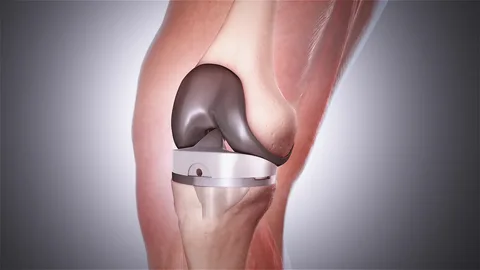Total knee arthroplasty, commonly known as total knee replacement surgery, is a routine and highly successful surgical procedure performed to relieve pain and restore function in knees damaged by arthritis or injury. As people of baby boomer generation are now reaching an age where knee replacement surgeries are becoming more common. This article provides an overview of the total knee arthroplasty procedure and what patients can expect from the treatment.
What is Total Knee Arthroplasty?
Total Knee Arthroplasty involves replacing the knee joint surfaces that have been damaged by arthritis with artificial implants made of durable metal alloys and high-grade plastic. It is considered one of the most common and effective treatments for advanced knee osteoarthritis. During the procedure, the surgeon removes the damaged cartilage and bone from the tibia (shinbone), femur (thighbone), and patella (kneecap). The joint surfaces are then resurfaced and realigned with prosthetic components to allow better movement of the knee and reduce pain.
Candidates for Knee Replacement Surgery
Total knee arthroplasty is typically recommended for patients who have failed to get relief from pain and stiffness despite trying more conservative treatment options like medications, physical therapy, bracing or injections. Candidates for knee replacement surgery are those with advanced knee arthritis that limits their daily activities and causes persistent pain and inflammation. Factors like severity of joint damage, level of pain, age, level of activity, and patient expectations are considered to determine suitability for the procedure.
Preparing for Surgery
Prior to the surgery date, the patient’s general health is evaluated through assessments, lab tests, and imaging scans. Any medical conditions like diabetes or heart disease may need optimization. Pre-operative education helps patients understand what to expect during the hospital stay and recovery process. Arrangements are also made for at-home care after discharge. On the day of surgery, patients are admitted to the hospital and prepared for anesthesia before being wheeled into the operating room.
The Surgical Procedure
Total knee replacement surgery is performed under general or spinal anesthesia and usually takes 1-2 hours. The surgical team first makes an incision on the front of the knee to access the joint. Bone cuts are then made using surgical tools or computer navigation systems for precise alignment and positioning of the implants. The implants, consisting of metal alloy femoral and tibial components along with a plastic tibial insert, are secured into place with bone cement. The patella may also be resurfaced if needed. The incision is then closed with sutures or surgical staples.
Post-Operative Care and Recovery
After surgery, patients are typically kept in the hospital for 1-3 days for close monitoring and physical therapy sessions to help regain knee mobility. Pain is managed with medications along with swelling control strategies like elevation, ice, compression and antibiotics to prevent infection. Once medically stable, patient is discharged home with crutches or a walker. Physical therapy continues on an outpatient basis to regain strength and achieve full range of motion in 6-12 weeks. Light daily activities and exercise help long term relief and function of the new knee joint.
Long Term Outcomes
Studies show that 90% of total knee replacements are still functioning well 15-20 years after surgery. With proper post-op care and rehabilitation, most patients regain independence and are able to resume daily and recreational activities within a few months. Long term success depends on factors like body weight, age and severity of pre-existing joint damage. Overall, knee replacement surgery significantly improves quality of life by alleviating pain and restoring mobility in arthritic or damaged knees. Complications are rare with modern implant designs and surgical techniques. For eligible patients, it remains a highly effective treatment option.
*Note:
1.Source: Coherent Market Insights, Public sources, Desk research
2.We have leveraged AI tools to mine information and compile it



